ARUSHA NATIONAL PARK (137 sq km)
The closest national park to Arusha town – northern Tanzania’s safari capital – Arusha National Park is a multi-faceted jewel, often overlooked by safarigoers, despite offering the opportunity to explore a beguiling diversity of habitats within a few hours. The entrance gate leads into shadowy forest inhabited by inquisitive blue monkeys and colourful turacos and trogons – the only place on the northern safari circuit where the acrobatic black-and-white colobus monkey is easily seen. In the midst of the forest stands the spectacular Ngurdoto Crater, whose steep, rocky cliffs enclose a wide marshy floor dotted with herds of buffalos and warthogs.
Further north, rolling grassy hills enclose the tranquil beauty of the Momela Lakes, each one a different hue of green or blue. Their shallows sometimes tinged pink with thousands of flamingoes, the lakes support a rich selection of resident and migrant waterfowl, and shaggy waterbucks display their large lyre-shaped horns on the watery fringes. Giraffes glide across the grassy hills, between grazing zebra herds, while pairs of wide-eyed dik-dik dart into scrubby bush like overgrown hares on spindly legs. Although elephants are uncommon in Arusha National Park, and lions absent altogether, leopards and spotted hyenas may be seen slinking around in the early morning and late afternoon.
It is also at dusk and dawn that the veil of cloud on the eastern horizon is most likely to clear, revealing the majestic snow-capped peaks of Kilimanjaro, only 50km (30 miles) distant. But it is Kilimanjaro’s unassuming cousin, Mount Meru - the fifth highest in Africa at 4,566 metres (14,990 feet) – that dominates the park’s horizon. Its peaks and eastern footslopes protected within the national park, Meru offers unparalleled views of its famous neighbour, while also forming a rewarding hiking destination in its own right.
Passing first through wooded savannah where buffalos and giraffes are frequently encountered, the ascent of Meru leads into forests aflame with red-hot pokers and dripping with Spanish moss, before reaching high open heath spiked with giant lobelias. Everlasting flowers cling to the alpine desert, as delicately-hoofed klipspringers mark the hike’s progress. Astride the craggy summit, Kilimanjaro stands unveiled, blushing in the sunrise.
|
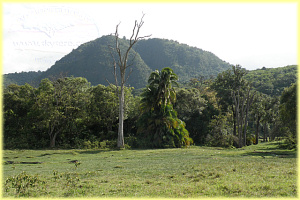
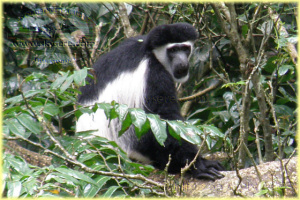 |
|
TARANGIRE NATIONAL PARK (2600 sq km)
Day after day of cloudless skies. The fierce sun sucks the moisture from the landscape, baking the earth a dusty red, the withered grass as brittle as straw. The Tarangire River has shriveled to a shadow of its wet season self. But it is choked with wildlife. Thirsty nomads have wandered hundreds of parched kilometers knowing that here, always, there is water. Herds of up to 300 elephants scratch the dry river bed for underground streams, while migratory wildebeests, zebras, buffalos, impalas, gazelles, hartebeests and elands crowd the shrinking lagoons. It's the greatest concentration of wildlife outside the Serengeti ecosystem - a smorgasbord for predators – and the one place in Tanzania where dry-country antelope such as the stately fringe-eared oryx and peculiar long-necked gerenuk a regularly observed.
During the rainy season, the seasonal visitors scatter over a 2,600 sq km (1,500 sq miles) range until they exhaust the green plains and the river calls once more. But Tarangire's mobs of elephants are easily encountered, wet or dry. The swamps, tinged green year round, are the focus for 550 bird varieties, the most breeding species in one habitat anywhere in the world.
On drier ground you find the Kori bustard, the heaviest flying bird; the stocking-thighed ostrich, the world's largest bird; and small parties of ground hornbills blustering like turkeys.
More ardent bird-lovers might keep an eye open for screeching flocks of the dazzlingly colourful yellow-collared lovebird, and the somewhat drabber rufous-tailed weaver and ashy starling – all endemic to the dry savannah of north-central Tanzania.
Disused termite mounds are often frequented by colonies of the endearing dwarf mongoose, and pairs of red-and-yellow barbet, which draw attention to themselves by their loud, clockwork-like duetting. Tarangire's pythons climb trees, as do its lions and leopards, lounging in the branches where the fruit of the sausage tree disguises the twitch of a tail.
|
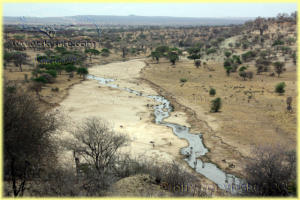
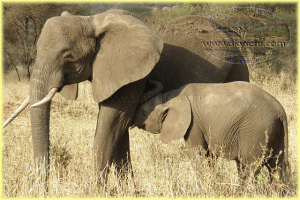 |
|
LAKE MANYARA NATIONAL PARK (330 sq km)
Stretching for 50km along the base of the rusty-gold 600-metre high Rift Valley escarpment, Lake Manyara is a scenic gem, with a setting extolled by Ernest Hemingway as “the loveliest I had seen in Africa.The compact game-viewing circuit through Manyara offers a virtual microcosm of the Tanzanian safari experience.
From the entrance gate, the road winds through an expanse of lush jungle-like groundwater forest where hundred-strong baboon troops lounge nonchalantly along the roadside, blue monkeys scamper nimbly between the ancient mahogany trees, dainty bushbuck tread warily through the shadows, and outsized forest hornbills honk cacophonously in the high canopy.
Contrasting with the intimacy of the forest is the grassy floodplain and its expansive views eastward, across the alkaline lake, to the jagged blue volcanic peaks that rise from the endless Maasai Steppes.
Large buffalos, wildebeests and zebras herds congregate on these grassy plains, as do giraffes – some so dark in coloration that they appear to be black from a distance. Inland of the floodplain, a narrow belt of acacia woodland is the favoured haunt of Manyara’s legendary tree-climbing lions and impressively tusked elephants. Squadrons of banded mongoose dart between the acacias, while the diminutive Kirk’s dik-dik forages in their shade. Pairs of klipspringer are often seen silhouetted on the rocks above a field of searing hot springs that steams and bubbles adjacent to the lakeshore in the far south of the park.
Manyara provides the perfect introduction to Tanzania’s birdlife. More than 400 species have been recorded, and even a first-time visitor to Africa might reasonably expect to observe 100 of these in one day. Highlights include thousands of pink-hued flamingos on their perpetual migration, as well as other large water birds such as pelicans, cormorants and storks.
| 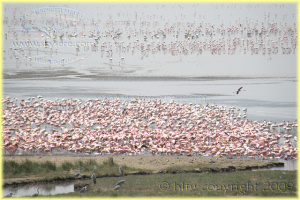
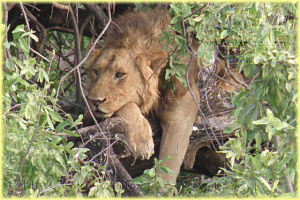 |
SERENGETI NATIONAL PARK (14760 sq km) THE SERENGETI SHALL NEVER DIE ( Professor Bernard Grzimek )
The Serengeti National Park covering an area of 14,763sq.Km, Serengeti National Park is the largest National Park in Tanzania. The Park is located some 320km to the northwest of Arusha, lying in high plateau between the Ngorongoro highlands and the Kenya/ Tanzania border, and extending almost to Lake Victoria to the west. Aptly named “ endless plains” by the Maasai people, you immediately experience this vastness as enter the southeastern plains of the Par from Ngorongoro.
Declared a protected area in 1921 and gazette as a National Park 1951, Serengeti is the oldest National Park in Tanzania and undoubtedly one of the most famous Wildlife sanctuaries in the World. The principal features of the Serengeti are the short and long Grass plains in the south and east, the Acacia Savannah in the central areas, the hilly and densely wooded area in the North an the extensive woodland in the West. There is a variety of scenery, which include the plains, Lakes, Hills and the Rock outcrops called Kopjes.
The main game drive areas in the Serengeti are the Seronera Valley, the Western Corridor, and Lobo. In the Seronera Valley, animals that can be seen are Leopards, Lions, Buffalos, Hippos, Giraffes, Elephants, Rhinos, Cheetah and Crocodiles.
From December, when the long rains start, to May, eastern Serengeti plains provide the best opportunities for Game viewing as hundreds of thousands of the Migratory animals are concentrated in this part attracted by the short palatable grass. Between May and June, when drought sets in, Serengeti is site of one of the most breathtaking events in the Animal Kingdom- the Migration of thousands of Wildebeests heading Southwest, North or West in search of Water and pastures. The Lobo area remain rich in wildlife during the dry months of July to October when most of Game has moved from the grass plains in the South. This is also true of Western Corridor towards Lake Victoria when the Migration
usually arrives between June and July.
Serengeti provides sanctuary to the highest concentration of plains animals in the world. A survey estimates an animal population of about 4 million including 3,000 lions 1,600,000 wildebeests, 500,000 zebras. There are over 400 species of birds in Serengeti National Park.
|
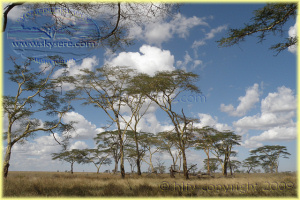
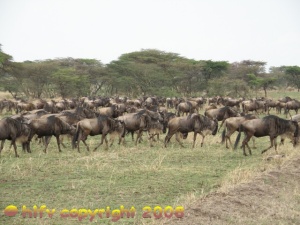 |
NGORONGORO CONSERVATION AREA (8288 sq km)
A UNESCO protected “World Heritage Site” the Ngorongoro Conservation Area is situated some 190 km West of Arusha, between Lake Manyara and Serengeti National Park.
Covering approximately 8,288 sq km, the Ngorongoro Conservation Area consists of the Ngorongoro Crater itself, Olduvai Gorge, the Empakai Crater , Olmoti Crater and Oldoinyo Lengai Mountain.
The Ngorongoro Conservation Area is a pioneering experiment in molt-purpose land use where the diverse interests of wild animals, plants and people are being integrated. Wild animals are protected as in the National Parks. The craters of Ngorongoro and Empakai are reserved exclusive for wildlife, while the rest of the Ngorongoro Conservation Area is shared by wildlife, people and livestock.
The Maasai, the main residents of Ngorongoro, are nomads who move with their herds of cattle, sheep, goats and donkeys in search of pasture and water. In recent years the Maasai have been encouraged to work on the land supplement their tradition diet of milk, blood and meat.
The Ngorongoro Crater, which is the central attraction in the area, is largest Caldera in the world that has its walls intact. The Ngorongoro Crater floor lies 610 meters below the rim and has an area of 265 sq km, with a diameter of 16km to 19 km. The sight of the Ngorongoro Crater is simply stunning. “There is nothing with which to compare. It is one of the wonders of world” once wrote Professor Bernard Grzimek.
The Crater floor is covered with plains animals, including lions, leopards, cheetahs, hyenas, jackals, rhinos, buffalos, zebras, gazelles, elands, hartebeests and hippos.
The rainy season is between November and May. The Crater rim is about 2286 meters high and is chilly during the morning and evening.
| 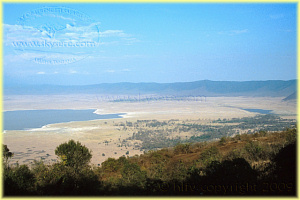
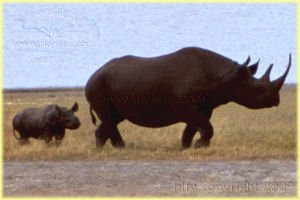 |
|

